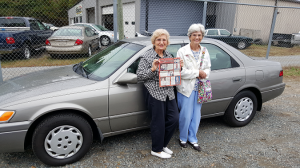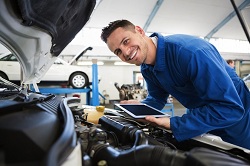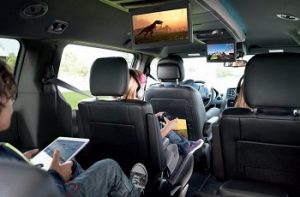Ok, so remember the time you were talking up that new car or truck to your uncle and he replied, “I never buy new…, always 2 years old.” You were like.. but I want a NEW car! Do you also remember that this was the uncle with a second home in Dana Point California and a perpetual happy face. That used car advice carries a little more weight when it’s coming from someone who has made lot’s of smart financial moves. So why is buying used so smart? Cars are more reliable than ever before and last much longer (even if not well maintained previously). They can be easy on your budget through the entire ownership experience. However, all used cars aren’t created equal so always do your research before buying. Now without further ado, here are the top reasons for buying used automobiles for your consideration.
1. Value. As far as value is concerned, the old adage rings true: A car loses value as soon as you drive it off the dealership lot—up to 15% depending on the vehicle. It doesn’t stop there; by the time it’s four years old, the typical car retains only about half of its value. After that, however, the depreciation curve is much less steep.
So, buying a three or four-year-old car, which should still have years of dependability, makes plenty of sense. It’s even possible to buy a car at this age, drive it for a year and resell it with little or no loss in equity. However, once cars are six-years old, the depreciation curve increases again, and cars of that age are less reliable.
“It also cost less to insure a used car, as used vehicles have less value than a new model. You can also save more money once the car becomes older by dropping collision and theft coverage, if you choose.
Depending on the state you live in, you also might save money on vehicle registration fees. In many states, the fee they charge to register a car is based on the car’s sales price.”
As a rule of thumb, you shouldn’t put money toward repairs once they surpass more than half of a car’s value. So, for example, if you have a nine-year-old car valued at $4,500, a $2,300 repair bill is probably better spent as a down payment on your next used car.
So, the most cost effective way to own a car is to buy one that’s about 3- or 4-years old and drive it until it’s no longer driveable or worth the cost to maintain.
2. Dependability. Overall, car dependability has improved considerably over the past decade. A five-year-old vehicle is likely to have about a third fewer problems than one would have had a decade back. Engine, transmission and exhaust problems, which once plagued older cars, have decreased dramatically, according to automotive research groups.
“When properly maintained, a vehicle built in 2011 should easily last another six to eight years without needing any major repairs.”
Modern cars can last 150,000 miles or even much longer when properly maintained.One downside to owning used car is that it is typically out of warranty, and you’ll have to pay for repairs yourself. However, most will be for wear items such as brakes, batteries and tires.
Used-car dealers try to push certified pre-owned cars as the next best thing to buying new and they’ve been very popular with budget-conscious drivers who want new-car dependability without paying the new-car price.
“But a certified pre-owned car typically costs $2,000 to $2,500 more than an identical non-certified car, and the extra price you pay is often more than what you would likely spend on repairs during the car’s warranty period. So, these cars are really nothing more than used cars with an expensive extended warranty tacked onto the price.”
With relatively newer used cars in particular, certification doesn’t make much sense as most cars are relatively trouble-free in their first three to six years. Your best bet when buying a used car is to take it to an independent mechanic for an inspection and skip the in-house certification and expensive warranty and put that money into a rainy-day fund for the car if something goes wrong.
3. Safety. Only a few years ago, buying a three- or four-year-old used car meant that you had to give up advanced safety features like electronic stability control, anti-lock brakes, and side-curtain air bags, but those features can now found on most cars manufactured after 2009. However, you should still do some research to make sure any car you’re interested in has such safety features, do not even consider a car without stability control, which is a critically important safety feature that can keep a car on its intended path by preventing it from sliding sideways in a turn.
Stability control has been found to reduce the risk of fatal-single car accidents by more than 50%. Near half of all fatal car crashes involve just one vehicle colliding with a tree or another obstacle after leaving the road.
All vehicles manufactured from 2012 on have stability control as a standard feature, mandated by the National Highway Safety Administration.
If you are thinking about buying a used car, we recommend referring to J.D. Power & Associates’ list of vehicles rated highly for dependability. You should also refer to Edmunds.com’s Consumer Ratings and Reviews to read about other owners’ personal experiences with their vehicles.
4. Sustainability (Going Green). From a sustainability perspective, it definitely makes more sense to buy a used car that gets good fuel economy over a new one, as the building and disposal of an automobile has a significant environmental impact. The automotive industry’s own studies have shown that between 12 and 28 percent of the carbon dioxide emissions generated during a car’s lifecycle occur during manufacturing and initial shipment. Every time a consumer opts for a used car over a new one, that’s one car that’s already passed through those phases and one less vehicle headed to the scrap heap.
And while you might think buying a new hybrid might be more ecologically sound that buying a used car, hybrids actually have a much larger environmental impact to build than comparable non-hybrids, as those lithium-ion, lead-acid, or Nickel-Metal Hydride batteries are no friends of the environment. And electric cars like the Tesla and Nissan Leaf are emission free only if the electrical power comes from a source that is renewable, like solar or wind. It’s much more likely that the electricity will come from a coal- or natural-gas burning power plant.
So, buying a used car could be your greenest choice.
TM Auto Wholesalers Social Media by Pixel Lab Designs
Sources
-
Weathers, Cliff. 4 reasons you should buy a used car instead of a used one, Used cars are not only easy on your pocketbook, they’re easy on the environment. ALTERNET. Alternet, 11 Feb. Web. 2015 5 Mar. 2016
Used Vehicles, Used Car, Used Cars, Used Trucks, Dependable Cars, Pre owned cars,







